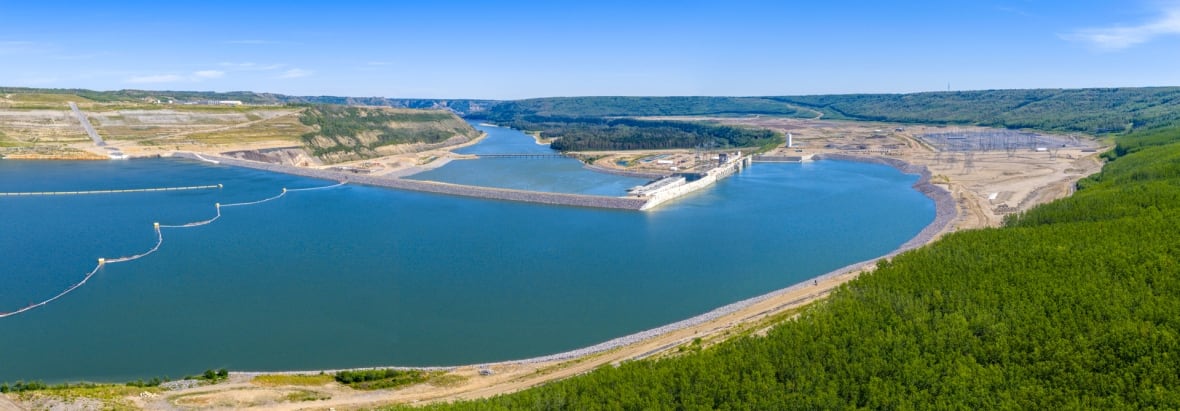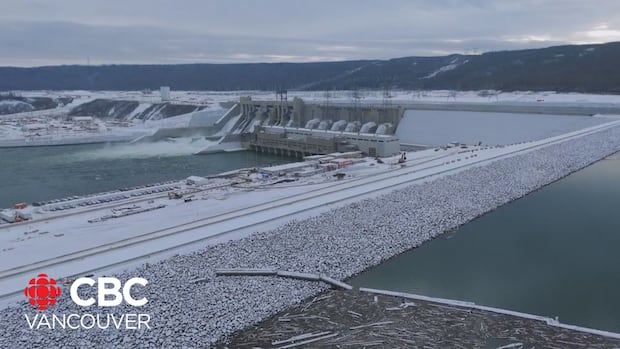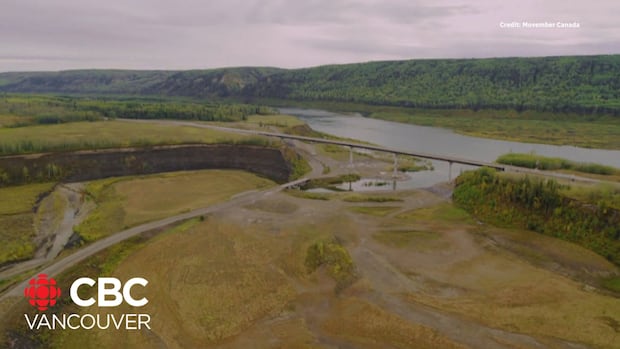B.C. Hydro says that the sixth and final generating unit on the Site C hydroelectric megaproject in northeast B.C. is now online.
The massive energy project has been under construction since 2015, and its first generating unit became operational last October, when power began being supplied to the grid.
At $16 billion, nearly double of its initial price tag, Site C is considered B.C.’s most expensive infrastructure project.
It went ahead despite court cases from First Nations and other groups, some of which decried the impact of flooding land and changing the course of the massive Peace River in northeast B.C.
 The 83-kilometre reservoir for the Site C dam is seen in August 2025. (B.C. Hydro)
The 83-kilometre reservoir for the Site C dam is seen in August 2025. (B.C. Hydro)
Site C was initially approved by the then-B.C. Liberal government in 2010, and the project stayed on course after a review by the B.C. NDP government in 2017.
B.C. Hydro estimates the dam will be able to provide 5,100 gigawatt hours of electricity each year, adding eight per cent to the province’s total production capacity.
The hydroelectric project draws from an 83-kilometre-long reservoir, which covers an area of about 5,550 hectares of land, 25 times the size of Stanley Park.
WATCH | Who benefits from Site C: 
Who stands to gain from the massive Site C dam?
After nearly a decade of construction, the massive Site C dam is finally generating electricity. But the debate about the megaproject is far from over. While it’s meant to power thousands of homes and electric cars, what is the real cost and who stands to gain? Camille Vernet reports.
It was filled in with water starting last August, and Energy Minister Adrian Dix said that “generations of British Columbians” would benefit from the clean electricity generated by the project.
“The commission of Site C’s final generating unit is another step forward to securing B.C.’s clean energy future,” he said in a statement.
Hazards in area: B.C. Hydro
B.C. Hydro says that, now that the final generating unit is operational, future construction work at Site C will consist of completing the powerhouse and generating station and paving access roads.
The utility estimates it will serve B.C. Hydro customers for the next century, and is now providing enough electricity to power 500,000 homes.
“Work also continues to backfill the tunnels used to divert the Peace River, and revegetate areas no longer required for construction,” a statement from B.C. Hydro reads.
WATCH | Timelapse of Site C dam being filled: 
Timelapse shows massive Site C dam reservoir being filled
Over the course of 11 weeks, B.C. Hydro filled the 83-kilometre long Site C dam reservoir near Fort St. John, covering a surface area 25 times the size of Stanley Park.
The utility says that there continue to be a number of hazards in the area around Site C and the surrounding slopes, and it’s urging members of the public to stay away for now.
“These potential hazards include floating vegetation debris and the surrounding land and shoreline continuing to stabilize,” the statement reads.
“The new B.C. Hydro public boat launches will open when the reservoir is deemed safe, which is expected to be spring 2026 at the earliest.”
First Nation opposition
The project was not completed without controversy and opposition.
In 2018, the West Moberly First Nation lost a bid for an injunction order against the project, having argued that the dam would cause irreparable harm to the nation’s territory and way of life — rights protected under Treaty 8. The Union of B.C. Indian Chiefs called the ruling a “grave disappointment.”
Later, in 2022, the nation came to a partial settlement with B.C. Hydro and the provincial and federal governments.
It included an impact and benefits agreement between, 5,000 acres of provincial Crown land transferred to the First Nation and an agreement to release West Moberly’s claims against the Site C project.
At the time, Chief Roland Willson told CBC News he had been reluctant to settle out of court, but his community felt it was out of options.
With the dam now complete, B.C. Hydro has released flyover drone video of the megaproject

